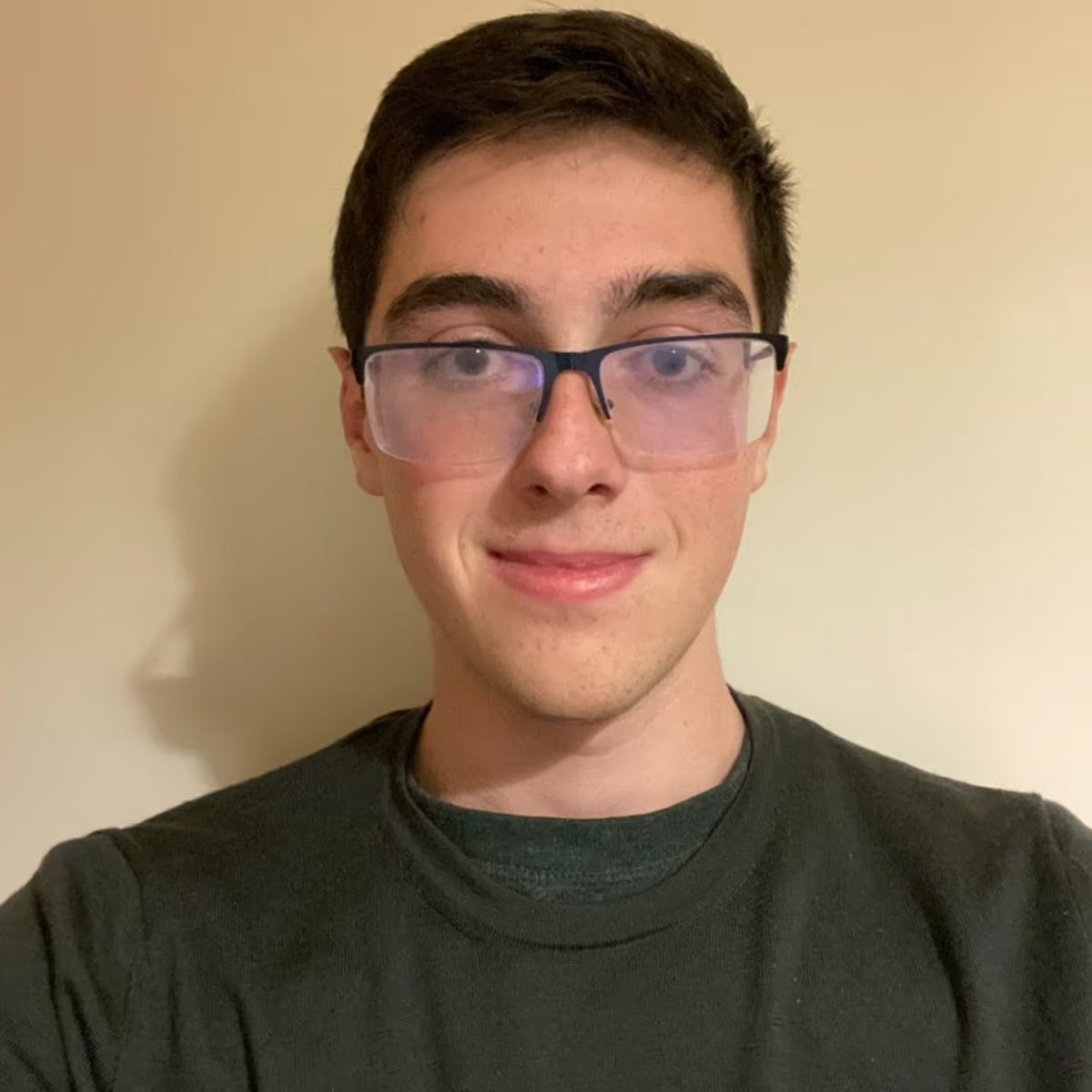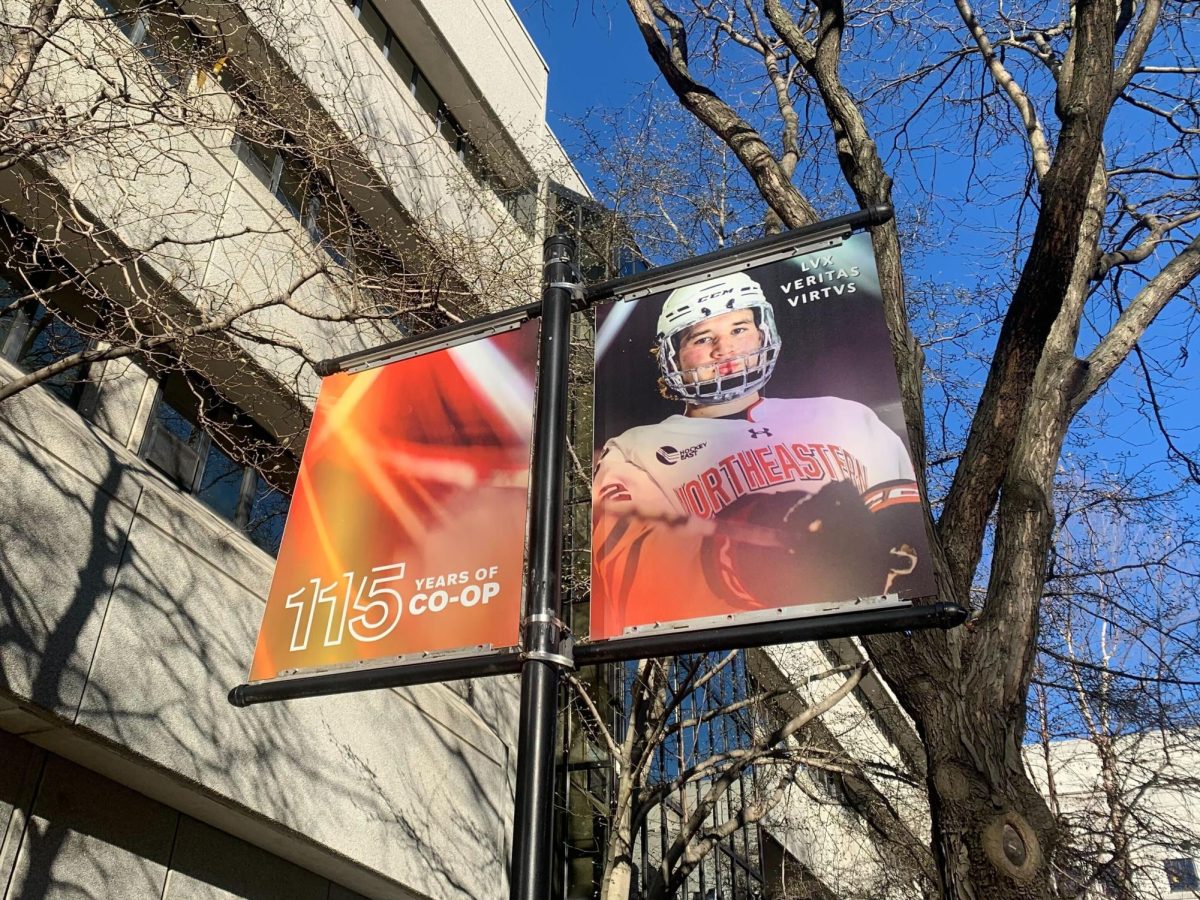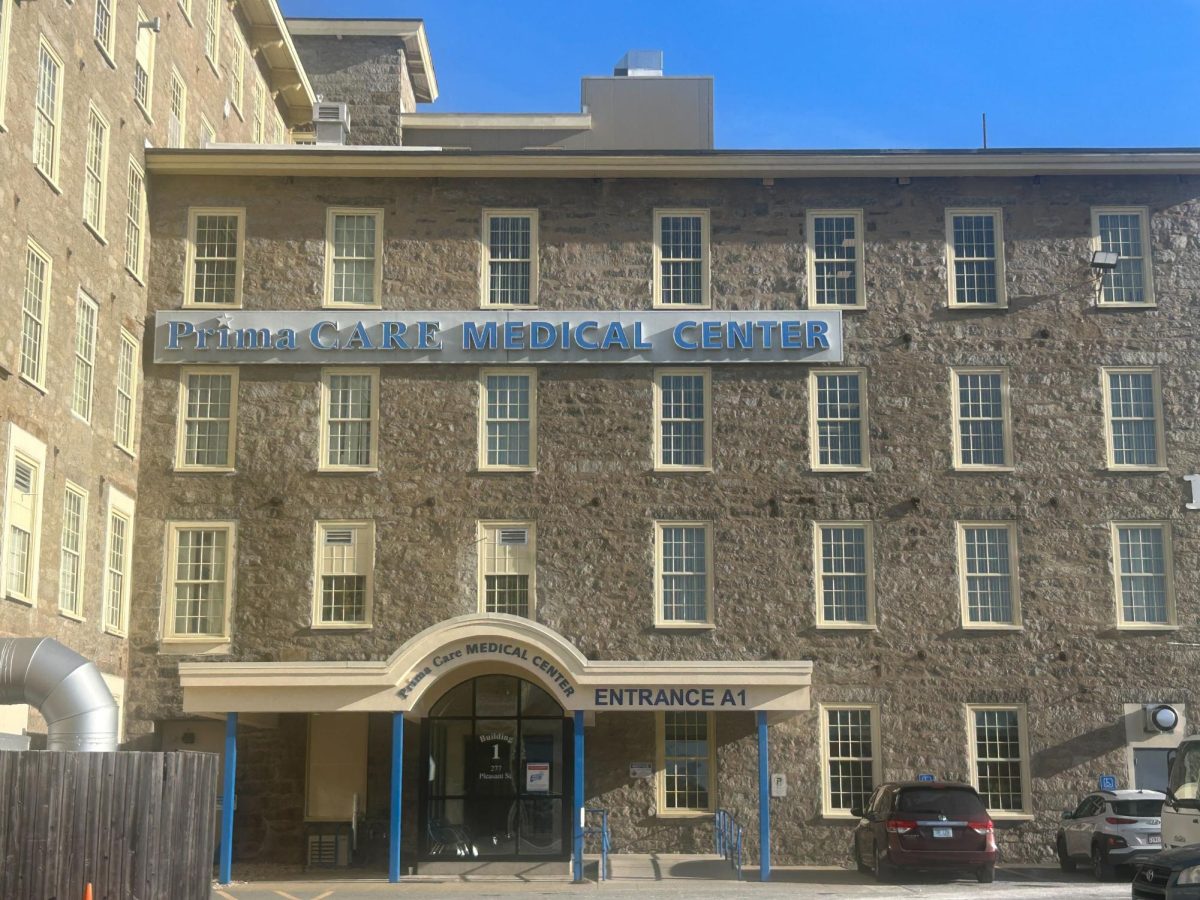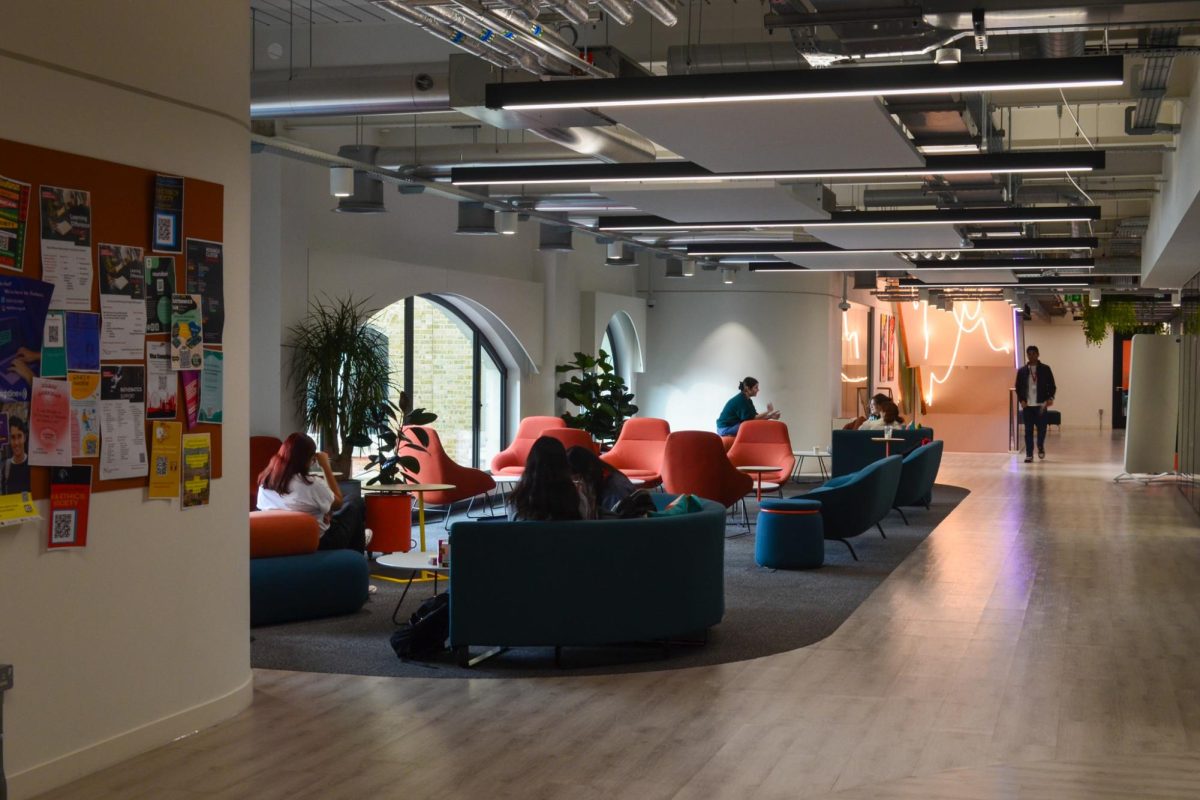By Jenna Ciccotelli, news staff
When thinking about Jewish people in Germany, many immediately flash back to the Holocaust. Northeastern professors Natalie Bormann and Martin Blatt are out to change this perception by highlighting Germany’s efforts to rebuild and memorialize the Holocaust more than 70 years after the liberations of German concentration camps.
Together with Jennifer Sartori, associate director of Northeastern’s Jewish Studies program, and German professor Diana Erinna, Bormann and Blatt created an exhibit titled “Jewish Life in Germany Today” that opened Monday in the International Village lobby. The main part of the exhibit is a set of posters that sketch out the history of Jewish culture in Germany as well as the lives of Jewish-German individuals today.
“The German government is invested in bringing themes to campuses in the United States that relate somehow to U.S.-German relations,” said Bormann, an associate professor in Northeastern’s political science department. “We situated the exhibit into the theme of rebuilding communities in general.”
The exhibit was funded by the German Embassy in Washington D.C. through a Campus Week grant that is awarded annually to about 20 universities nationwide, which Bormann said is a competitive process.
A German native, Bormann has hosted three Campus Week events in the past and is also the faculty advisor for the Holocaust and Genocide Studies Dialogue of Civilizations program that travels to Germany and Poland during the summer.
Blatt, director of the public history program at Northeastern, said he is interested in how countries and groups commit violent acts against each other and how that violence is remembered. His mother is a Jewish refugee from Heidelberg, Germany.
“[It’s amazing that] each of us from different personal histories and professional histories and vantage points are vitally concerned with Germany,” Blatt said. “How Germany remembers, what Germany remembers, how Jews remember and memorialize and commemorate.”
On Monday, there was an opening reception for the exhibit titled “Perspectives on Jewish Life in Germany Today” at Northeastern Crossing. The event featured a panel made up of Ron Fish, a rabbi at Temple Israel in Sharon, Massachusetts; Toby Axelrod, an author and journalist who writes about Jewish experiences in Berlin for Forward.com; and Peter Wiederspahn, an associate professor in Northeastern’s School of Architecture who directed the inaugural Berlin study abroad program. The panel used their own experiences in Germany to discuss what Jewish life in the country looks like as well as the country’s handling of commemorating the Holocaust.
Fish has visited Berlin three times – before and after the fall of the Berlin Wall and then again last summer. On his most recent trip, he traveled with 11 other Boston area rabbis through the German consulate.
“There is memory everywhere,” he said of present-day Germany before launching into a slideshow with photographs of his most recent visit.
Fish spoke of a Bar Mitzvah that took place, in which the teenager celebrated his coming of age in the same country that his great-grandfather had been deported from exactly 72 years earlier.
“[That Bar Mitzvah] speaks to the vitality and complicated rootedness we can find in all aspects of German-Jewish life today,” he said. “There is a healing. It’s not only about memorializing.”
Wiederspahn also showed a photo slideshow that focused on memorials and museums that students study while abroad in Berlin.
“What is interesting to us in the School of Architecture program about being in Berlin is identifying a city that is unfolding,” he said. “[Berlin is] doing so in a way that is in stark contrast to the 20th century.”
Wiederspahn explained a new commemorative tradition known as Stolpersteine, literally meaning “stumbling stones” in German, in which small plates are installed throughout Europe at the addresses of Holocaust victims bearing the names, birthdays, deportation dates and death dates of the deceased. Over 50,000 stones have been added in 22 countries, albeit amid controversy. Wiederspahn said controversy stemmed from the history of gravestones being stolen from Jewish cemeteries under the Nazi regime so they could be used for German sidewalks.
Axelrod, who is originally from New York, received a grant to work in Germany in 1997 and has lived in Berlin since.
“I feel a very complicated mix of pride in what German Jews have done,” she said. “And some cynicism and skepticism at the same time.”
Axelrod cited the work of individuals who discover their family histories as well as the programs that bring Jewish leaders to the country as reasons for her pride in Germany, but was hesitant regarding their impact.
“I speak to a lot of visitors, and I think they’re great,” she said. “[But] there’s an idea that […] having Jewish people visit Germany and seeing how it is now could somehow influence how Germany is seen on a larger scale.”
Fish disagreed with Axelrod’s stance, saying that a visit to Germany has a positive influence on Jewish people.
“There is a real sustained attempt to grapple with the past and a sense of responsibility in looking at the world today,” Fish said.
Graduate student Beka Bryer, who is studying public history, said she enjoyed the diverse speakers on the panel.
“It was really interesting to see so many different types of people,” she said.
Alysha Griffiths, another graduate student studying public history, disagreed with Bryer, saying she wished others had been included on the panel.
“I think it would have been interesting to see a [native-born] citizen of Germany [on the panel],” she said.
To culminate the exhibit’s opening week, the 2013 German film “Ein Apartment in Berlin” will be screened Thursday from 11:45 a.m. to 1:25 p.m. in Ryder Hall. Additionally, an essay contest is accepting submissions until Monday, Nov. 14. Students can submit 800-1,000 word essays discussing the revitalization of Jewish life in Germany. The contest will be judged by Bormann and the first place winner will receive $200.
“Jewish Life in Germany Today” will be on display in the International Village lobby through January 2017.
Photo by Alex Melagrano









